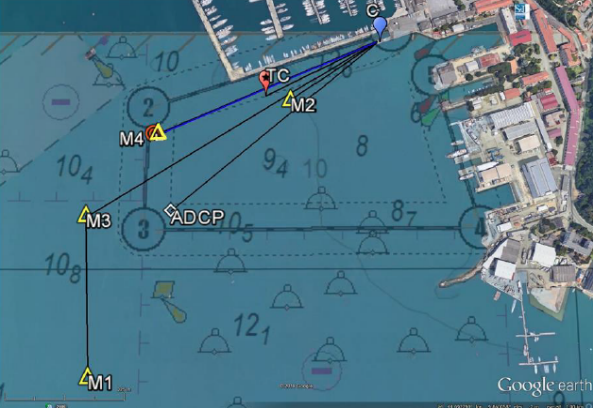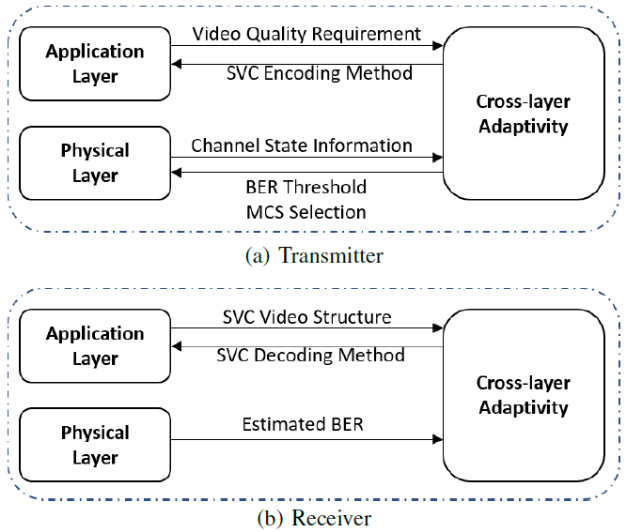ASVTuw: Adaptive Scalable Video Transmission in Underwater Acoustic Multicast Networks
Research | | Links:

Achieving reliable underwater acoustic communications is a challenging task because of time-varying channels in the underwater acoustic environment. In this research, we propose the Adaptive Scalable Video Transmission (ASVTuw), which includes adaptive Scalable Video Coding (SVC) selection and adaptive Modulation and Coding Scheme (MCS) selection. To meet the required video quality, the adaptive SVC selection is proposed at both the transmitter and receiver sides to extract the relationship between the Bit Error Rate (BER) and the Channel State Information (CSI) and customize the SVC video encoding/decoding method. The interaction between the BER at the physical layer and the received video quality at the application layer is explored thus improving the system robustness in the time-varying underwater acoustic channel. Instead of maximizing the received video quality, we explore cross-layer interactions to maximize the effective video transmission data rate given the narrow bandwidth in the underwater environment. The proposed strategy allocates resources in an adaptive way in order to improve the system robustness and achieve an efficient data rate. At the same time, the received video quality is ensured not lower than the users’ requirements. To select the MCS adaptively in the time-varying channel, the estimated CSI and the BER threshold are treated as the input features to the Convolutional Neural Network (DCNN), which learns the characteristics of CSI properly and predicts the suitable MCS effectively. Moreover, the ASVTuw works not only for unicast scenarios but for multicast as well. To validate the proposed ASVTuw, at-sea experiments were conducted using the Littoral Ocean Observatory Network (LOON) testbed hosted at the NATO Science and Technology Organization Centre for Maritime Research and Experimentation (CMRE), which is located in the Gulf of La Spezia, Italy. The collected experimental data are processed by MATLAB and then employed to evaluate the performances of the proposed ASVTuw over time.


Personnel:
- Zhuoran Qi, PhD candidate, ECE Department, Rutgers University (Link to Profile)
- Dr. Roberto Petroccia, NATO Science and Technology Organization Centre for Maritime Research and Experimentation, La Spezia, Italy (Link to Profile)
- Dr. Dario Pompili, PI, ECE Department, Rutgers University, New Jersey (Link to Profile)
Collaborators:
- NATO Science and Technology Organization, Centre for Maritime Research and Experimentation (CMRE) Link
Demo:
- Zhuoran Qi, Roberto Petroccia, and Dario Pompili. 2022. Demo: ASVTuw: Adaptive Scalable Video Transmission in Underwater Acoustic Networks. In Proceedings of the 16th International Conference on Underwater Networks & Systems (WUWNet ‘22). Association for Computing Machinery, New York, NY, USA, Article 28, 1–2. https://doi.org/10.1145/3567600.3569541 (Youtube Link)

